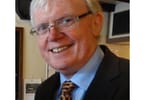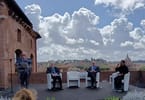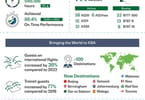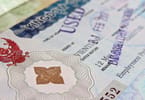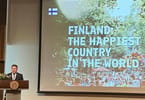UTRECHT, The Netherlands – Museum Speelklok presents the exhibition SingSong, Treasures from the Forbidden City from 16 October 2010 up to and including 28 February 2011. The exhibition is the crowning achievement of a three-year joint restoration venture between the Palace Museum of the Forbidden City (Beijing, China) and Museum Speelklok (Utrecht, The Netherlands). Her Royal Highness Princess Máxima of the Netherlands will open the exhibition. Visitors will have a once-only opportunity to admire the magnificent imperial clocks outside China, in Utrecht. The exhibition SingSong is a mysterious experience cloaked in the magical atmosphere of the Forbidden City.
During the 18th century, the most spectacular and costly clocks were traded from the West to China. The clocks were much sought after by the Chinese emperors and were also highly desirable gifts. Some enchanting clocks played music every quarter of an hour, and the Chinese called this novelty ‘the clock that plays by itself’, or in Chinese: ‘zimingzhong’. This term was anglicised by the West into ‘singsong’, the equivalent of the musical clock. Emperor Qianlong (1736-1796) amassed a vast collection of these fascinating and imaginative clocks, which now form part of the collection of the Palace Museum in the Forbidden City (Beijing). Museum Speelklok’s knowledge and experience of mechanical musical instruments is unique in the world, and has led to a three-year joint restoration venture with the Palace Museum. Together with its Chinese colleagues, Museum Speelklok has restored a number of beautiful imperial clocks.
The exhibition SingSong displays a selection of clocks representing the most important objects from the Qing dynasty, a period which formed a milestone in the history of Chinese antique clocks. Leading European clockmakers, such as the supreme master of the craft James Cox, produced many of these magical and mysteriously frivolous showpieces. For the first time in more than a century the imperial clocks will be playing again. The exhibition also offers visitors a peep behind the scenes of the cooperation and cultural exchanges between Beijing and Utrecht. More information about the exhibition SingSong see http://www.museumspeelklok.nl .
WHAT TO TAKE AWAY FROM THIS ARTICLE:
- The exhibition SingSong displays a selection of clocks representing the most important objects from the Qing dynasty, a period which formed a milestone in the history of Chinese antique clocks.
- The exhibition is the crowning achievement of a three-year joint restoration venture between the Palace Museum of the Forbidden City (Beijing, China) and Museum Speelklok (Utrecht, The Netherlands).
- Emperor Qianlong (1736-1796) amassed a vast collection of these fascinating and imaginative clocks, which now form part of the collection of the Palace Museum in the Forbidden City (Beijing).




